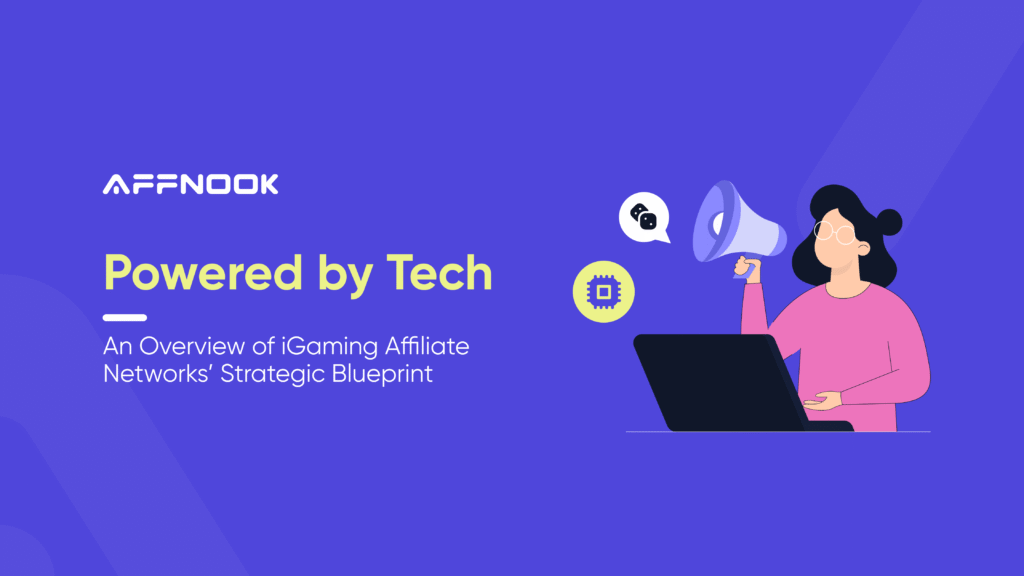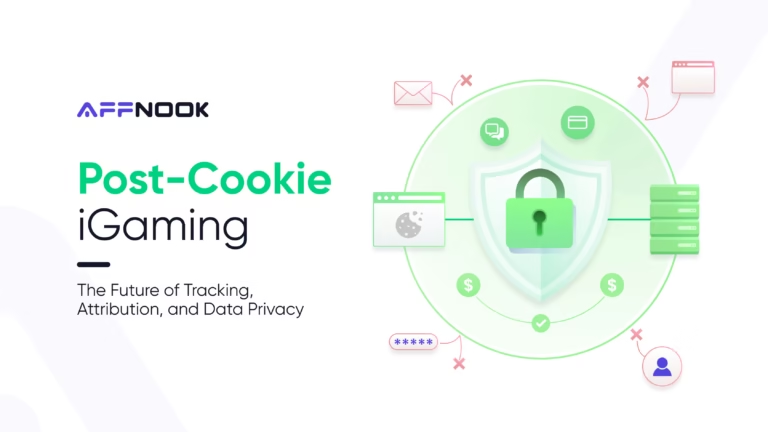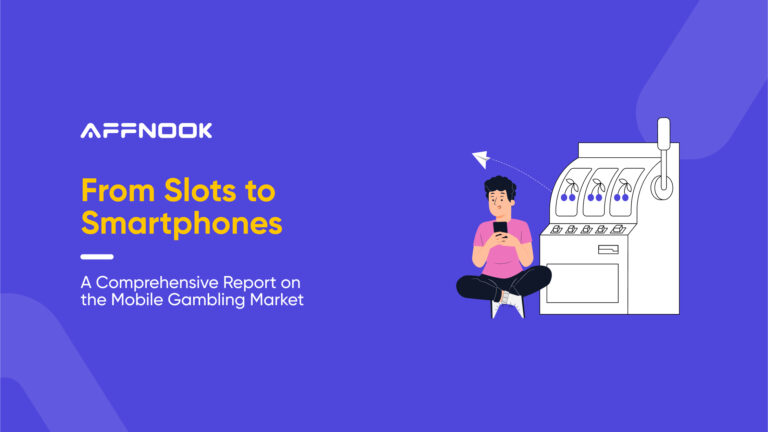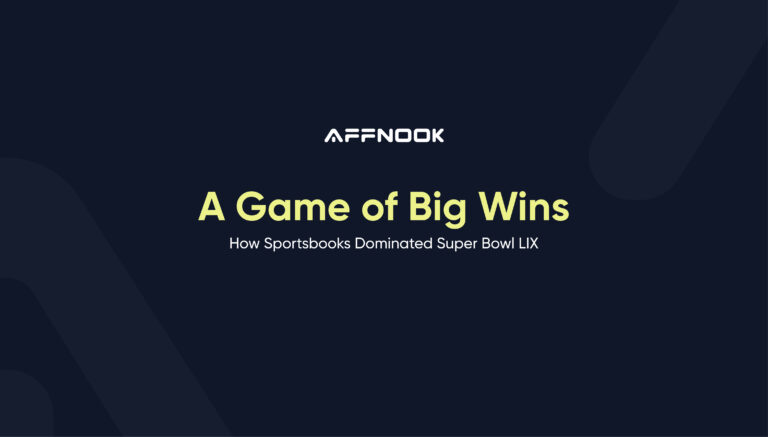Being risk averse comes to human beings naturally.
In a high stakes industry like iGaming, it is even more natural. Each poorly played odd equals real financial loss or revenue downslide. This is a reality even in the marketing spends aligned by iGaming operators and brands.
As a result, such prudence trickles down to promotional partners like affiliate networks, who incidentally rely heavily on conversions to keep the economic engines of their enterprise running.
The result? Overemphasis on outcomes, without due emphasis on the ‘how’.
And all this happens in the midst of tightening regulations, complex brand guidelines and regional legal disparities. Of course, there’s a way out for networks. In 2026, technology can fill the gap and help affiliate networks win despite the obstacles.
Everything from,
- Affiliate lifecycle management,
- Next-level data analytics for performance optimization,
- Superior legal compliance for multiple regions, and even,
- Effective conversion facilitation and tracking,
Are all possible for iGaming affiliate networks through building creative and high-quality tech stacks.
If you’re lucky, it can even be an all-in-one.
Let’s understand how affiliate networks can benefit equally from the unbridled growth opportunities of a growing industry, in sync with the operators and brands they service.
The iGaming Golden Age and its Challenges
In online gambling, player acquisition is a double edged sword. One one hand, it is an expensive sport of inflated CPAs and time-intensive organic efforts, which can allow the metrics to look good in the short term. But, there is no guarantee that players acquired in this manner will even be willing to stick around over the long-term.
That’s why the performance-driven model of growth, specifically, affiliate marketing works so well.
A study from Cognitive Market Research indicates that the global affiliate marketing industry currently stands at $18.5 billion in valuation (as of 2024). It is projected to reach 32 billion by 2031 — and iGaming is going to be a massive contributor to this number.
As the market expands, so too will the issues that come with a messy, dense zone of business. iGaming affiliate networks too will have to weather this storm.
The new pressures for affiliate networks represent in the following manners:
- Managing larger pools of global affiliates: Niche-focus and diversity in language, promotional style and medium-based strategies clearly works for affiliates. That’s why as iGaming expands, the publishers in the business will also grow — and this lot will be varied. So much harder to manage and work with if you’re relying on the old ways of doing things.
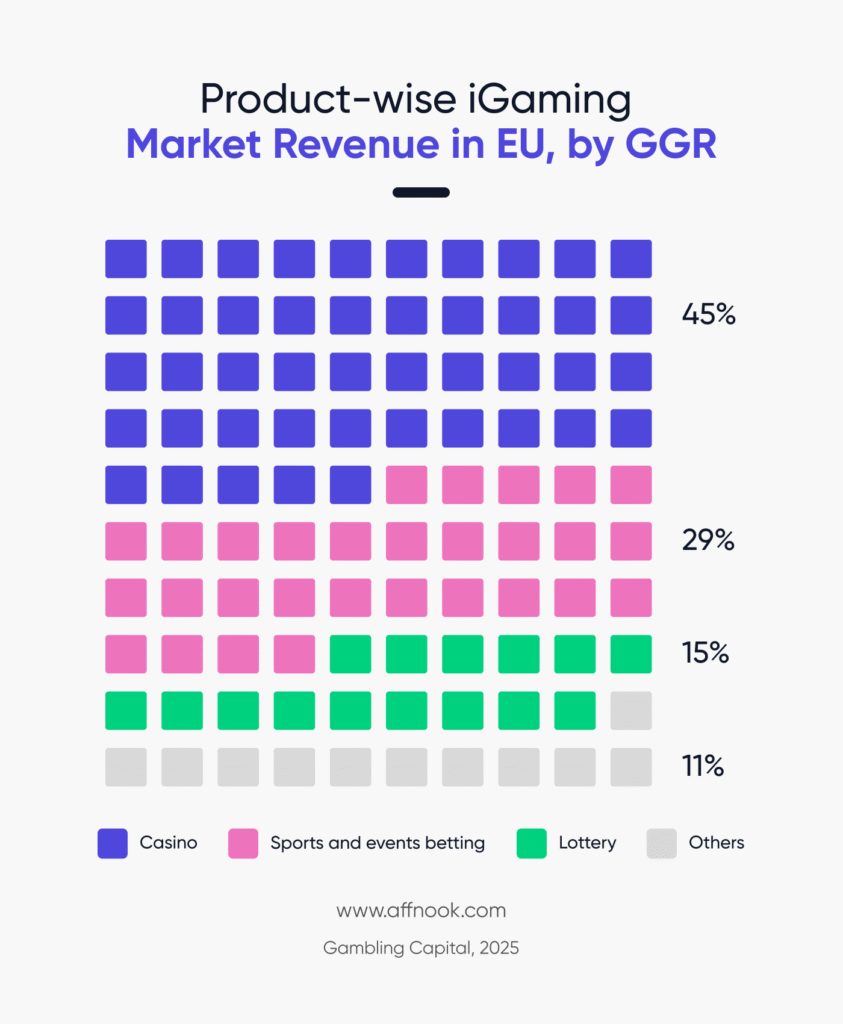
- Entering more markets around the world: There are pre-existing markets where iGaming has been present for a while now, which are growing. For instance, the North American CAGR is about 12% at present. Then there are countries which are just joining the regulated space, such as Latin America, where the CAGR is closer to 9% as per Grand View Research. Both countries have businesses that require affiliate promotions.
- Increasing regulation for harm reduction: Stringent compliance is slowly becoming the norm, not the exception for operators and iGaming affiliate networks, alike. As online gambling goes mainstream, the potential for poor conduct, irresponsible behaviours and predatory practices opens up. That’s why the law needs to take hold and encourage activities like multi-factor KYC, marketing ethics and responsible gambling.
The dependencies created by this new world order demand new ways of acting.
One such solution is creating a technology system, which allows networks to meet rules, regulations and norms across the world, while optimizing for profit — ensuring collective value, without making common mistakes.
Building Scalable Tech Stacks for Growth
There are basic technology components that aid in fulfilling certain functions. Think of a basic calculator. However, as organizations become behemoths, simple technology no longer cuts it. In such a situation, you need this calculator to even perform scientific calculations.
Is your tech stack capable of such drastic requirement changes? If not, it isn’t going to be a partner for growth — and it is time for a change.
In simple terms, a scalable technology stack should come with tools that can grow as your needs grow. This means, there should be:
- An option to request custom features,
- Round the clock customer support that shared edge use cases with you as they emerge, or,
- The option to enable integrations with other tools like CRMs as required.
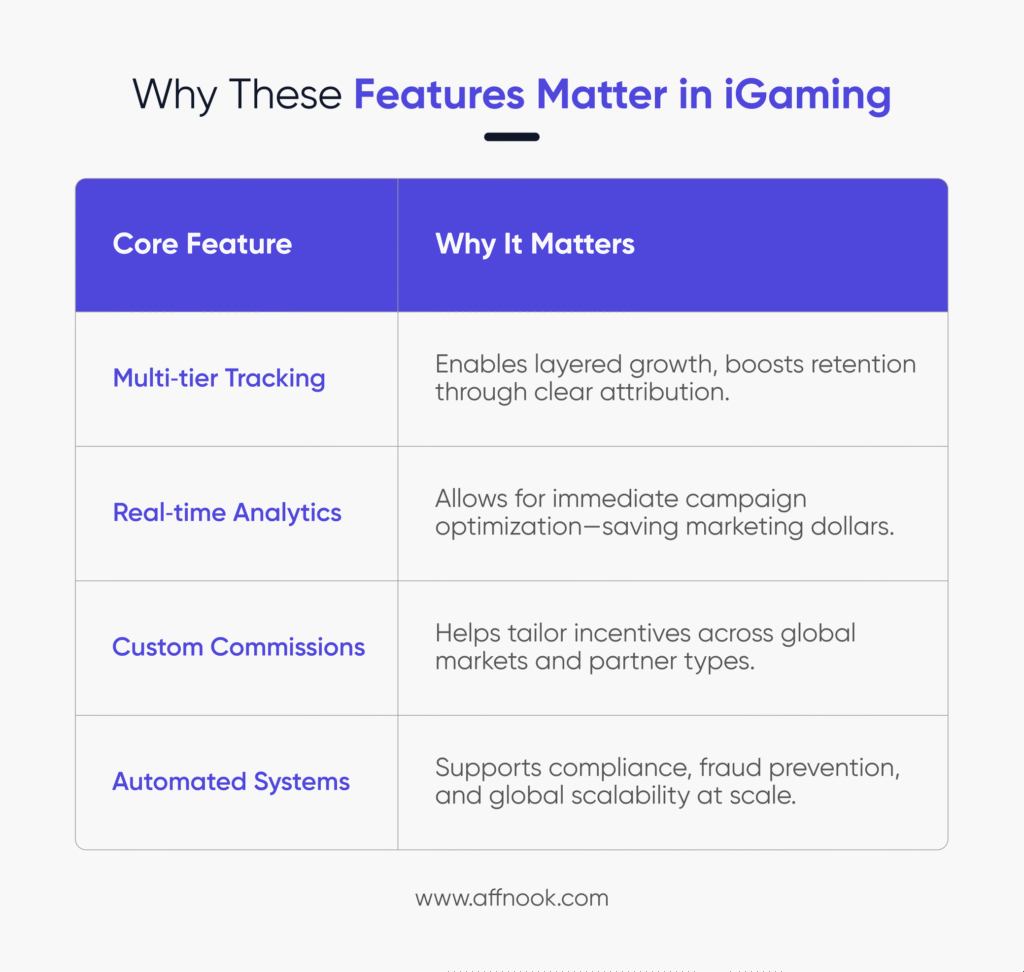
The Digital Backbone: Core Features iGaming Affiliate Networks Need
Armed with an excel sheet and gumption? That doesn’t cut it anymore. Well-structured and profit-earning affiliate networks are usually equipped with technology that enables effectiveness. A single tool or a collection of tools together can provide a good base for smooth operations.
Let’s understand what is expected out of such a tech stack.
1. Multi-tier Tracking and Hierarchical Structures
Affiliate networks are not flat bodies with a one-size-fits-all approach. That’s a recipe for disaster.
Since the goal isn’t simply to push traffic and earn commissions, the approach is different. Affiliates need to bring the traffic — but also achieve revenue or commission-activating behaviors that count as events. Some examples include qualified FTDs, recurring deposits, or wagers above a certain threshold.
This means: complex, multi-layered partnerships that are designed to recruit partners, bring in actual revenue and consistently achieve brand-aligned targets.
In a 2024 report from the Business of Apps, a 19% increase in affiliate onboarding and retention was noticed, when multi-tier programs were being implemented. This structure essentially rewards existing affiliates for the output of their referred affiliates, and encourages a never ending inflow of partner marketers to respective iGaming affiliate networks.
This is a potential goldmine — but only if your existing tools can handle the load of capturing all this data accurately. Hierarchies should be well-maintained, easily observed and should be able to generate accurate reporting and payouts.
2. Real-time Reporting and Analytics
Visibility is the be all and end all of the affiliate marketing industry. It’s the only way to get revenue-bound conversions, aka the lifeblood of the ecosystem.
Knowing what’s happening in real-time allows affiliate networks — similar to operators and brands — make snap decisions that enable better performances. The reporting should have a holistic nature, and include metrics on:
- Region-wise performance
- Traffic quality
- Player behaviours and so on.
If you’re not prepared to react immediately, there’s a high chance your time and efforts could be getting compromised. It also ensures you have an SOP for oddities like:
- Sudden drops in player registration from a given region, or
- Inflow of traffic from geos beyond preset campaign filters.
Well-laid out and segmented data is a great starting point for predictive analytics — allowing iGaming affiliate networks to identify a variety of advantages, including:
- The best promoters in their arsenal,
- The centres that usually provide good quality traffic for a given niche or product, and
- Best timezones for running certain types of promotions.
In more advanced systems, thresholds or benchmarks can be set. Whenever anomalies occur, they get recorded and whoever is running the affiliate program is alerted instantly.
3. Custom Commission Structures
Flat payout structures are easy to understand and incorporate. Think: CPA.
But it rarely works out in the long-term. When an affiliate knows a payday is linked to just the immediate conversion, the quality of player, probability of repeat action or engagement and other things of this nature no longer matter. Just the primary action that leads to payout carries value.
To extend the player lifecycle, it is essential to incentivize affiliates with the right kind of monetary values, that carry the promise of continual payouts, beyond the basic first conversion event.
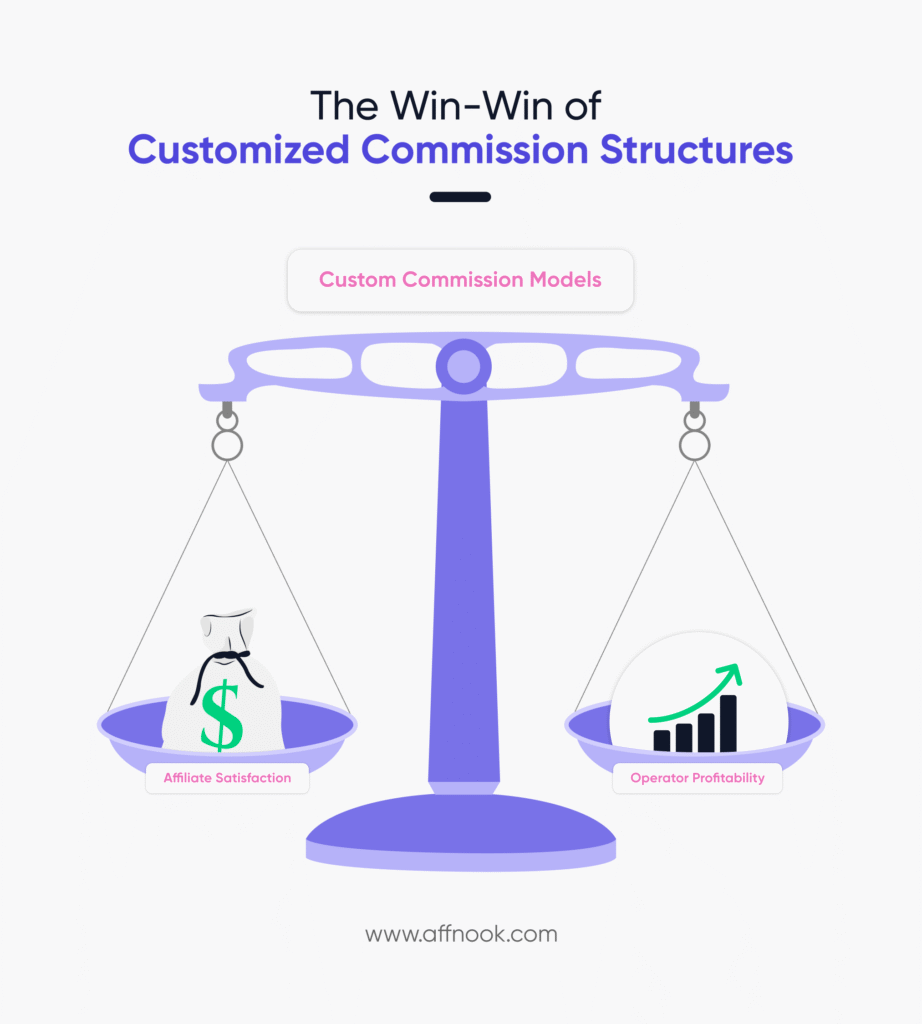
A scalable affiliate program must come with flexibility in rewarding partner marketers — ranging from hybrid deals to revenue sharing models.
According to Captiv8’s Affiliate Influencer Marketing Benchmark Report 2025, 62% of high performing iGaming affiliate networks offer customized commission models based on various factors. This type of logic-based self-sorting is possible through the right tech stack, which enables precise, error-free payout automation as well.
In practice, this looks something like:
- Higher tier payouts for sports betting affiliates during Wimbledon season, or
- Special hybrid plans for emerging markets to secure the loyalties of affiliates there.
Networks are promised smarter iGaming affiliate management. Affiliates get paid well for their services. Everyone wins.
4. End-to-end Automations
What’s the most limited commodity with growing affiliate networks? Time. That’s why automation is a simple hack that cuts down time taken for every task.
The good news is this expectation can actually be fulfilled by existing iGaming affiliate management systems and software. Everything from onboarding flows to fraud detection can be left up to automation.
The best part? Human error drops to zero. Efficiency gets maximized.
According to a Salesforce survey, 74% of those using automation felt it helped them get things done faster. It also means more time spent on strategy, performance improvement and investing in extending affiliate satisfaction with respective iGaming affiliate networks.
Such automation features should also include:
- API integrations with third party KYC vendors,
- Payment processing via trusted providers (plus invoicing), and
- Basic query support for regular and expected issues from affiliates.
That freed up time? Use it to focus on growth and business sustainability.
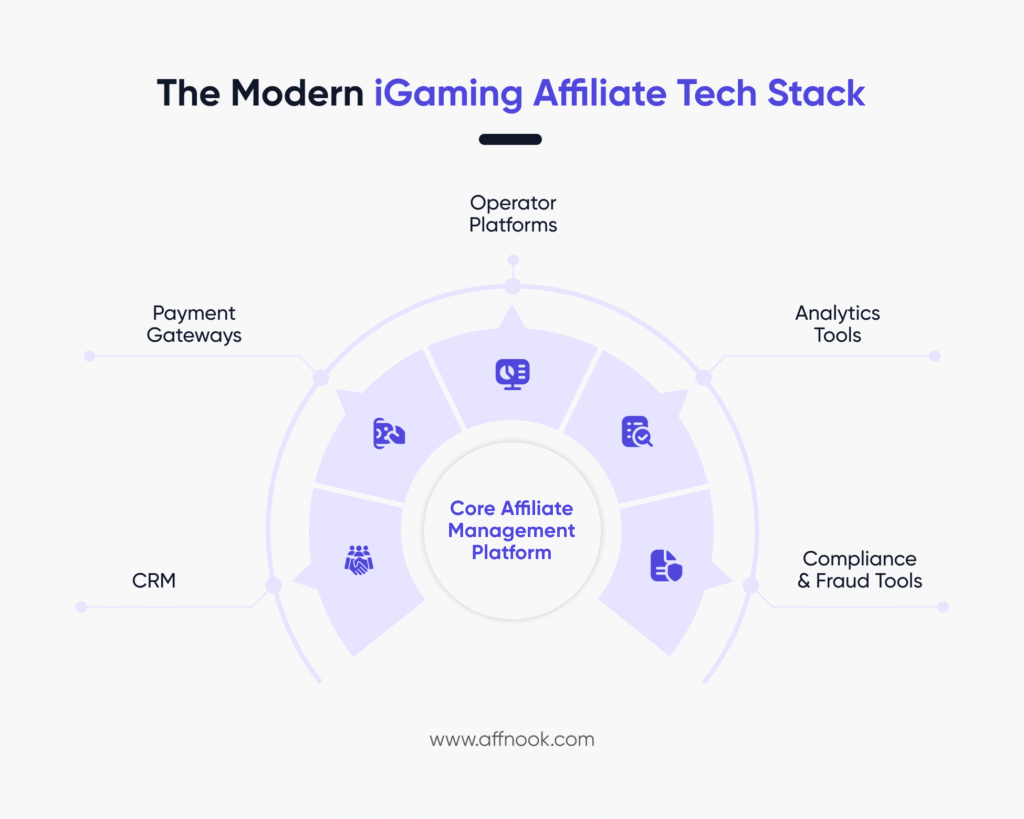
The Next Level: Seamless Integrations
We’ve delved fairly deeply into what’s required for affiliate networks to function like unstoppable machines. But how does the tech stack come together for this?
It all happens through APIs (or Application Programming Interfaces). They are rules and specifications which allow tools or softwares to interact with each other and exchange data.
Think of it like this: an API is a bridge between two completely different technologies, that allows information to flow from one to another so you can benefit from more complex functionalities — made possible through this union.
From customer relationship tools to payout systems and operator platforms, APIs are what enable scale without adding manual complexity.
For iGaming affiliate networks, this layering is applicable for:
- Customer Relationship Management or CRM Tools
Thousands of partners can be managed efficiently, while ensuring personalized and constant communication is maintained with each partner marketer. Such a tool allows superior cohort management by:
- Automatically pushing updates about new campaigns,
- Flagging compliance issues in affiliate promotions,
- Setting up onboarding-related automations and more.
How does this apply with existing tools? Take Salesforce or Hubspot, for instance. Linking your basic affiliate management software with such CRM mechanisms gives you more insights on engagement and active hours, than simple campaign performance metrics.
- Payment Service Providers
Quick, easy and no-nonsense global payments must be disbursed by affiliate networks of all sizes, and within every industry. With iGaming, specifically, the net can be even wider. Promoters are placed globally, to serve regional and niche markets.
That’s why integrations with payment partners can be a boon. This cuts two ways:
- Either you as the custodian of an affiliate network need to connect such a portal to your affiliate management system, or,
- You can rely on payment providers that link to one of your other assets.
The advantages for iGaming affiliate networks are endless:
- Reduced friction in payments
- On-time, and automated payouts
- Immediate processing and limited spend on fees
- Trackable invoicing for transparency, and so on.
In the end, it isn’t just you who reaps the benefits. Affiliates remain within the network, and more than happy to keep contributing to your campaigns.
- Operator or Brand Platforms
This is an operational technicality, which could be considered essential. When you’re pushing promotions for the products or services of an iGaming business, tracking of affiliate and customer activity can only progress when SDKs or APIs are involved.
The connection with the online casino or sportsbook backend enables you to obtain real-time data feeds on conversions, ongoing player activity and revenue events.
Such a system allows you to cross-check every single recorded conversion and subsequent payout — before it is initiated. If there’s a discrepancy between the reports you’re seeing and what the operator shares, you know where to search for the missing links.
An API-first approach is a boon for iGaming affiliate networks of all sizes, because:
- It reduced manual reconciliation of all metrics,
- You’re ensured improved reporting accuracy across all fields, and
- Data thus collected is vast, creating a holistic view of performance.
Overall, connectivity through APIs gives all manners of affiliate networks speed and scale — the two key ingredients for a competitive advantage in the online gambling business.
How to Master the Affiliate Lifecycle?
High-converting affiliate networks don’t emerge out of thin air. They’re built through a deliberate lifecycle management and extension strategy. The result? Flawless onboarding of top-tier affiliates (vetted and ready to go) and techniques for making sure they remain loyal.
Strategic Acquisition
It all starts with finding strong affiliate marketers — those who understand and follow your style of working. This includes: a match in –
- Promotional vertical or niche
- Operating region or country
- Mediums of promotion that you cater to
For example, if you’ve got one of those iGaming affiliate networks that is into SEO driven methods, zero in on content creators who have previously created SERP-ranking websites or authoritative guides that perform due to their content.
But this is just one method. The other one is much simpler.
Create a sub-affiliate program or a referral system. Get your strongest players to bring in more affiliates, who can fetch just as good or even better conversions. And it all works, because it doesn’t happen without incentives.
The original referrer gets a percentage of the referred affiliate’s payout — something you can configure into your affiliate expansion program. You can also set it up in ever-extending tiers. This means the loop of referrals can continue without any hitch as long as one affiliate refers another to your network.
Vetting and Onboarding
- Know Your Affiliate (KYA)
It’s like KYC, but for your business associates, or affiliates. It is a critical safeguard that involves obtaining and verifying documentation from promoters, including traffic sourcing details and taxation, so you can keep your books clear.
It limits the issue of iGaming affiliate fraud, and is a key method of ensuring compliance in tightly monitored markets around the world.
- Onboarding Automation
Use AI-driven to do the heavy lifting for you. End the manual flow of onboarding and add one more tool to your tech stack to generate agreement, validate data and ensure validity. This way iGaming affiliate networks get faster activations, and a lot less friction.
- Affiliate Training
Keep in-house materials that can help affiliate marketers come up to speed relatively quickly. This can include items like:
- A compliance checklist
- Performance optimization tutorials, and
- Content guides for better market visibility.
Ensuring Long-term Relationships
Let each affiliate be engaged by a dedicated personnel who manages them — aka an affiliate manager. They don’t just act as redressal support, but also become strategic partners for all the marketers assigned to them.
This kind of continual and robust support allows affiliates to feel valued. They also get something out of staying within your network. As a result, a long term relationship is almost guaranteed.
You can also lead with open communication and transparency.
Affiliates must trust you and the operational processes existing within whichever iGaming affiliate networks they subscribe to. You can set early expectations, maintain two-way communication channels and drastically reduce churn when it comes to partners.
You can even go one step further. Cream-of-the-crop affiliate managers can hold monthly Q&As, share feature roadmaps, and honor feedback. This way you get to turn existing partners into advocates.
Reliable Performance Optimization and Data Analytics
To truly thrive, affiliate networks must evolve beyond acquisition metrics. Here’s how it can be done.
Tracking Key Metrics for Actionable Insight
The basis of performance optimization lies in some core performance metrics, such as:
- FTDs (First‑Time Depositors)
- LTV (Lifetime Value)
- ARPU (Average Revenue Per User)
- NGR (Net Gaming Revenue)
Many make this mistake. Acquisition is not the end goal. Sustaining the relationship is.
Long-term affiliate value depends on post-deposit behavior, measured in churn, retention, and re-deposits. Tracking these gives networks a deeper understanding of affiliate quality which goes beyond just volume.
Fraud detection is equally vital for iGaming affiliate networks. Figures shared by RockApp suggest up to 50% of online gambling ad traffic is fraudulent. A Sumsub report reveals 83% of iGaming operators have experienced fraud in the previous year.
That’s going to impact your bottom line too. Especially when CAC has been through the roof recently.
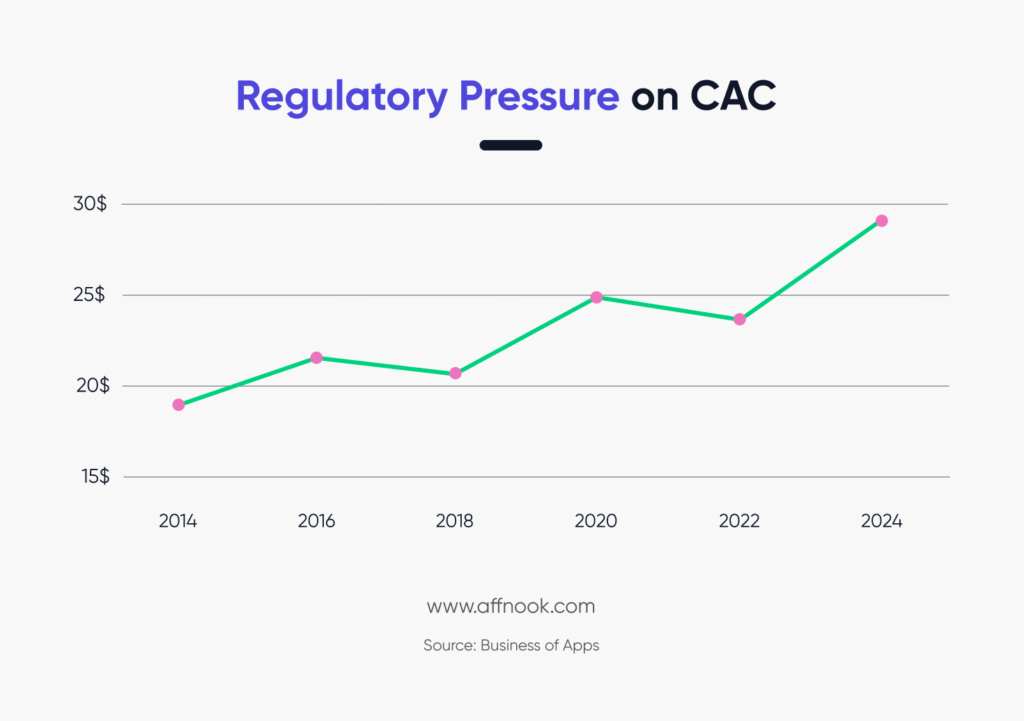
Therefore, performance tracking needs to go beyond simple acquisition funnels or basic retention strategies. There needs to be careful fraud checking at every step. Wherever instances of possible fraud are detected, it needs to be reported and eliminated.
Segmentation and Personalization
Why is segmentation necessary when it comes to affiliate networks?
Once segmented, networks can deploy personalized offers and creatives tailored to each group. Each of these groups can be split up to account for the following differences:
- Performance (e.g., conversion vs. traffic volume)
- Traffic quality (organic vs. paid)
- Niche verticals (casino, sports, esports)
- Compliance risk (history, geos, spend behaviors)
It can be said that AI-powered personalization can significantly boost click-through rates, deposits, and player loyalty. As a bonus, iGaming affiliate networks also get custom bonus structures and content adaptations reflecting user habits or gameplay preferences.
Leverage Data to Improve Campaigns (and Reduce Waste)
- A/B Testing & Optimization
Everything from banners and headlines to landing pages and bonus levels can be put to the test. One way to do it is using data to iterate and implement winning combinations, ensuring higher conversion efficiency and reduced cost per acquisition.
- Predictive Analytics
Modern affiliate systems can leverage AI/ML models to forecast trends: high-value geos, optimal campaign timing, and player behavior patterns. This enables:
- Preemptive budget shifts toward high ROI campaigns
- Early detection of underperforming creative
Both are great ways of reducing online gambling ad spend waste.
- Unified Data Systems
It’s a fact: data silos obscure insights. A centralized system can empower affiliate networks like your own to:
- Accurately match spends with returns
- Identify fraud hotspots and optimize payout flows
- Eliminate redundant tools and manual reconciliation
Consistent Fraud Monitoring
Fraud is a constant, which is why fraud detection too must be. Sumsub’s 2024 report notes fraud in iGaming shot up 64% year-over-year, from 0.4% in 2022 to 1.1% by Q1 2024.
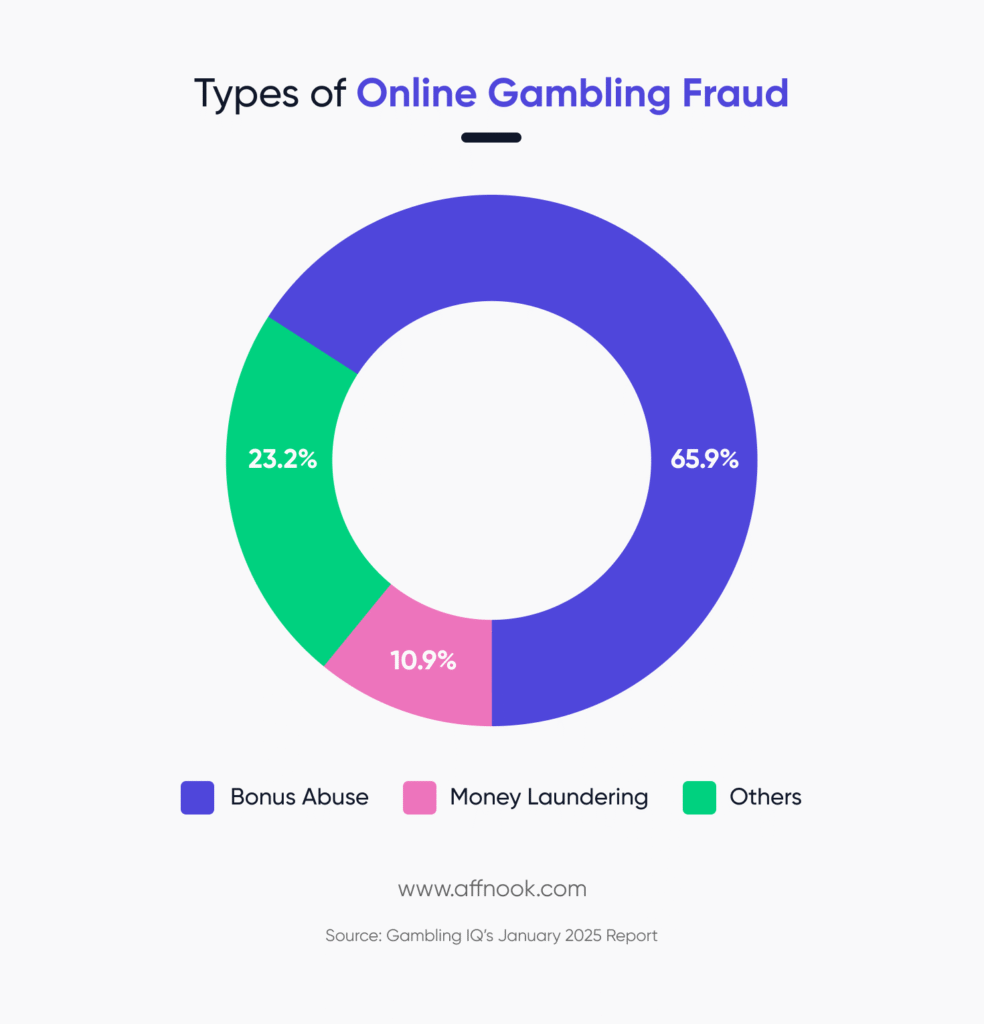
That’s why fraud shouldn’t be an afterthought. Instead, fraud monitoring should be a real-time activity. Don’t wait till later to take action.
iGaming affiliate networks leveraging real-time fraud analytics can:
- Automatically pause suspicious campaigns
- Flag and fire weak-performing or risky affiliates
- Redirect budget to legitimate, high-value players
Navigating Compliance Regulation and Risk
The Evolving Landscape
- Geo‑targeting Restrictions
Affiliates need to ensure promotions are only visible in licensed jurisdictions. Countries such as the Netherlands, Germany, and the UK now require operators to pre-approve affiliates before campaigns launch, enforcing jurisdiction-specific content rules — that you must be aware of.
- Data Handling (GDPR, CCPA)
Privacy regulations like the EU’s GDPR and California’s CCPA prohibit unauthorized collection or misuse of player data. All of your affiliates must have lawful consent, provide deletion rights, and maintain transparent processing records.
- Ethical Practices
This includes age-verification, clear terms on bonus offers, and prominent responsible gambling messages. There may occasionally be additional requirements. The UK Gambling Commission, for instance, enforces strict content rules to protect vulnerable audiences and minors.
- The Stakes are High
It’s a given: failing to meet compliance obligations can lead to significant fines and damaged brand reputation. In extreme cases, it can also lead to revocation of the license (for operators) or blacklisting (of iGaming affiliate networks).
Using Technology for Compliance
- Blacklist through Automation
Automatically flag and exclude affiliates or IPs that become known to show non-compliance or bad practices in general. Acting in real-time ensures you’re not catching up much after the fact, when the damage is done.
- Get Policy Breach Alerts
Tools like GiG Comply or Rightlander can scan the web for breaches like use of prohibited language or running content in unapproved markets. They also instantly send alerts in such instances. It gives you the time to act before a violation occurs.
- Audit Logs and Documentation
Maintaining reports of all kinds is crucial for any organization. As a matter of fact, if regulators request proof of compliance, having accessible audit trails protects the affiliate network and operator alike.
- Use Geo-blocking Tools
You can implement IP-detection and content gating so that users outside permitted jurisdictions never see your campaigns. Saves you both time and money.
Summing Up
The iGaming affiliate ecosystem hosts a very important stakeholder, beyond just brands and operators: the iGaming affiliate networks. To thrive in an expanding market, affiliate networks must go beyond outdated methods and seek out tech-driven solutions.
Building a scalable tech stack is crucial. This involves implementing tools that:
- Support multi-tier tracking
- Provide real-time reporting and analytics
- Allow for custom commission structures
- Enable end-to-end automation
One way to bridge this gap is through API-based integrations. They make it possible for your entire software ecosystem to be connected, communicative and integrated. The outcome is effective operations and improved efficiency.
What’s more? Mastering the affiliate lifecycle fosters long-term relationships. This includes:
- Strategic acquisition
- Thorough vetting via Know Your Affiliate (KYA) processes
- Automated onboarding
- Ongoing affiliate training and support
Technology is also a harbinger of better compliance and performance optimization. Beyond the basic scope of what’s required, such tech should be flexible to your needs (now and in the future).
That’s why Affnook is the preferred iGaming affiliate management software for growth-ready iGaming affiliate networks, operators and brands. As a comprehensive tool that specializes in the online gambling vertical, we’ve got 24/7 support and features on request to accommodate every requirement you may have.
Even better: Affnook comes with in-built integrations for payment providers and MMP tools. Connect with us today to learn more about Affnook’s features.
Help Centre
1. How will changing regulations impact global affiliate networks in 2026?
The compliance efforts will need to increase since rules are getting stricter all the time. Things like KYC and content marketing norms will need to be met with even more precision.
One way to meet such requirements is through geo-targeting accurately, and by automating promotion monitoring to fall in line with jurisdiction-specific rules. Marketing strategies employed both by affiliates themselves, and networks will need a refresh.
Additionally, every new market you enter will need a lot of due diligence to ensure no wires are crossed, and no rules get broken.
2. How can iGaming affiliate networks combat fraud and ensure traffic quality?
As technology to detect fraud evolved, fraud too tends to change in representation. Therefore, in 2026, nothing less than AI/ML will be effective in catching fraud, or eliminating it from valid traffic flow.
Real-time monitoring, device fingerprinting, and behavioral analytics can identify suspicious activity. In addition, you can weed out affiliates practicing online gambling fraud through stringent KYA norms.
3. What technology is vital for scaling affiliate networks effectively?
In 2026, the way affiliate networks function, with respect to regulations, competition and the market, means that they need a robust tech stack. Multi-tier commissions, real-time attribution tracking, automated compliance for multiple regions and so on are basic requirements, which can easily be fulfilled through automation.
In fact, such tech stacks can be amplified or made more effective through API-based integrations, which allow two-way flow of information. From CRMs to payment providers, all tools can be part of a larger, more stable and communicative ecosystem.
4. What are the best strategies for managing affiliate relationships throughout their lifecycle?
Effective lifecycle management involves strategic acquisition of high-quality affiliates, streamlined onboarding automation, and continuous training. This can be further extended through regular support in the form of dedicated account management from assigned affiliate managers, and transparent communication.
5. How does data analytics enhance profitability for iGaming affiliate networks?
Tracking data metrics ensures you’re always on top of your game when it comes to performance optimization. In addition, there are other benefits to take advantage of:
- Knowing LTV
- Segmenting affiliates for personalized offers
- Using predictive analytics for various purposes, and so on.
